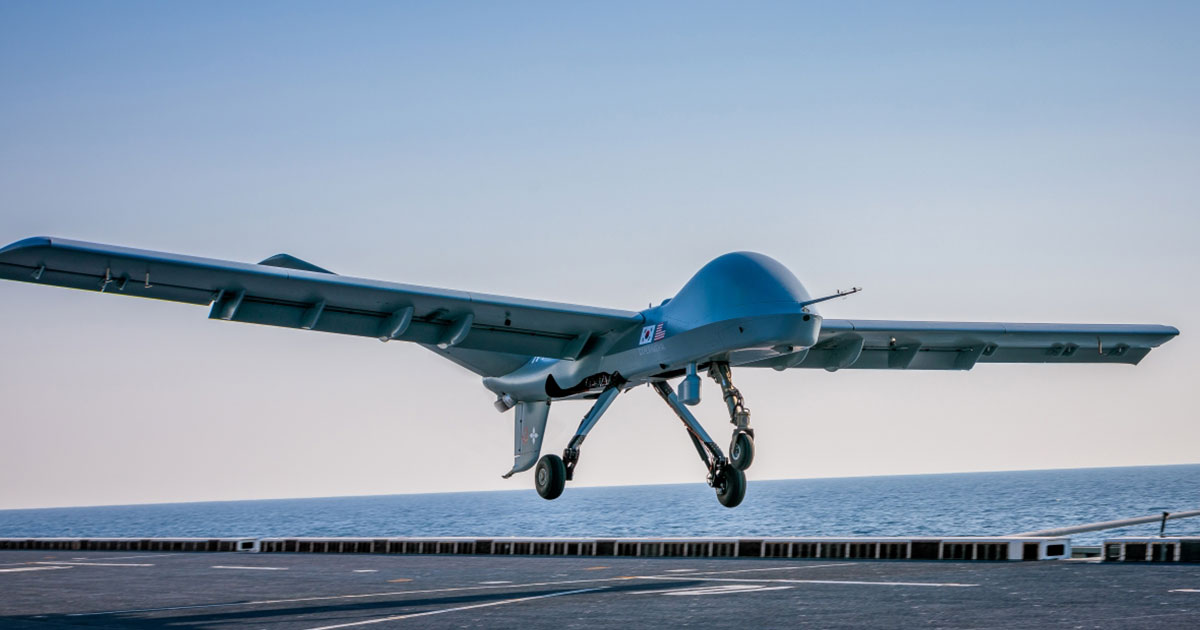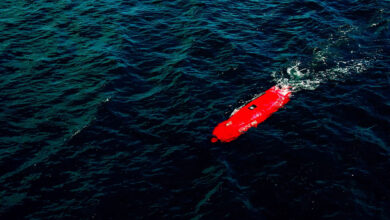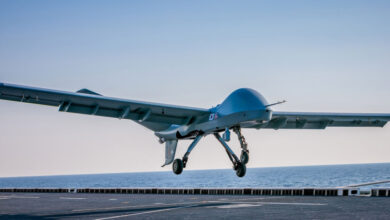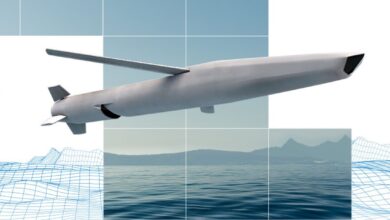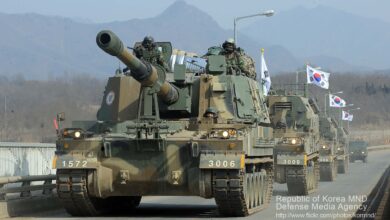S. Korea Navy Demos First Gray Eagle Drone Ship-to-Shore Flight
For the first time, a General Atomics Gray Eagle short takeoff and landing (STOL) drone has launched from a South Korean amphibious assault ship at sea and landed at a ground base.
The drone successfully completed its flight with a routine landing at Pohang Navy Airfield, positioning the Dokdo warship for future drone carrier operations, South Korea’s Navy highlighted.
“This demonstration illustrates the ability of the [Gray Eagle] STOL to safely operate on many types of aircraft-capable ships, which opens myriad new ways our allies can use this UAS to support multi-domain naval operations,” GA-ASI CEO Linden Blue said.
Features
The Gray Eagle is designed for reconnaissance, surveillance, target acquisition, and attack missions.
It is a medium-altitude, long-endurance drone capable of launching from large-deck warships, including amphibious assault ships and aircraft carriers.
With an endurance of 25 hours, a top speed of 167 knots (192 miles/310 kilometers per hour), and an operational ceiling of 29,000 feet (8,840 meters), the Gray Eagle can cover a wide range of missions.
The drone has a payload capacity of 1,075 pounds (488 kilograms), allowing it to carry a variety of equipment, including electro-optical/infrared sensors with laser designation, synthetic aperture radar, communications relay systems, and up to four Hellfire missiles.
Long-Term Strategy
Amid security challenges in the region, the initiative aims to strengthen South Korea’s military readiness and accelerate the deployment and integration of drones into naval operations.
The recent trial aligns with Seoul’s broader strategy to develop a mixed manned-unmanned maritime combat system focused on advancing AI-driven unmanned systems.
“The demo highlighted the versatility of STOL aboard a warship, in the Dokdo, designed not for fixed-wing aircraft but solely for helicopters,” said South Korean Chief of Naval Operations, Admiral Yang Yong-mo.
“Gray Eagle STOL’s flight proves that navies can add significant new capability without costly major modifications to their existing warships.”

